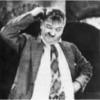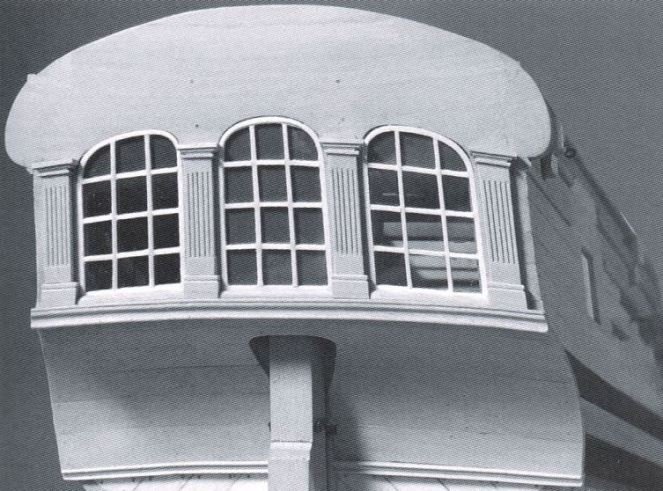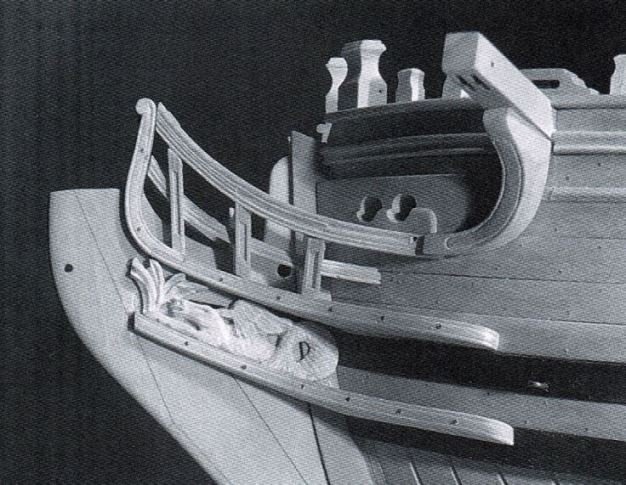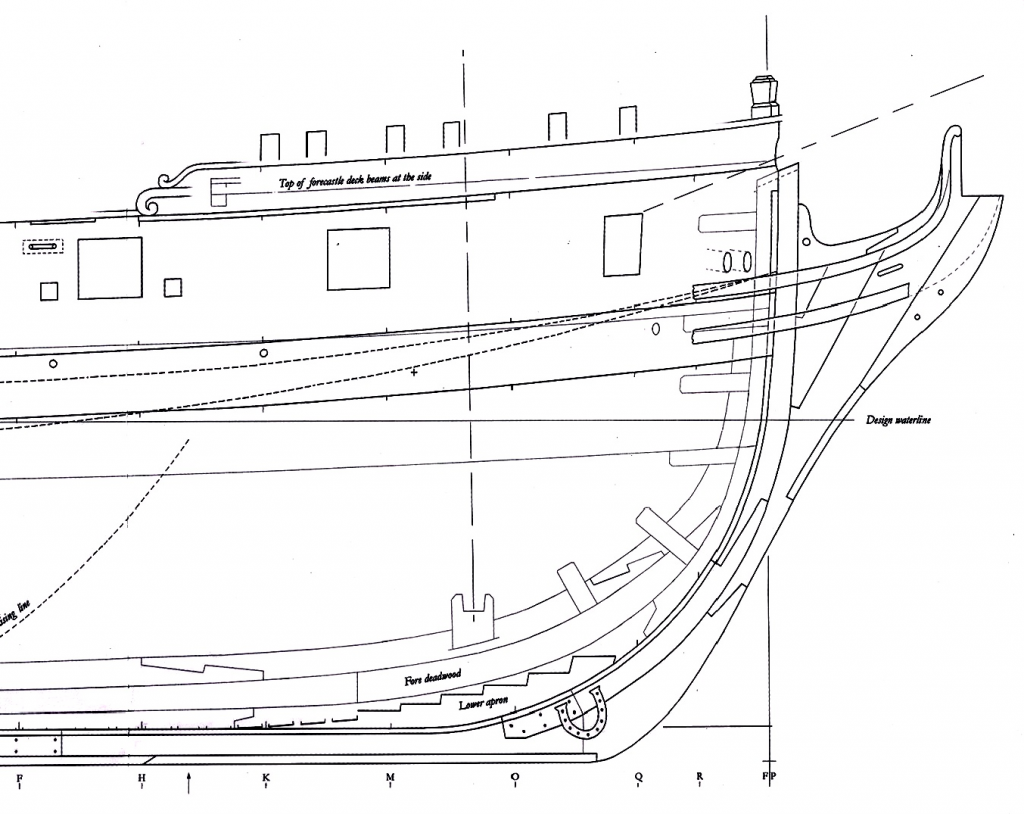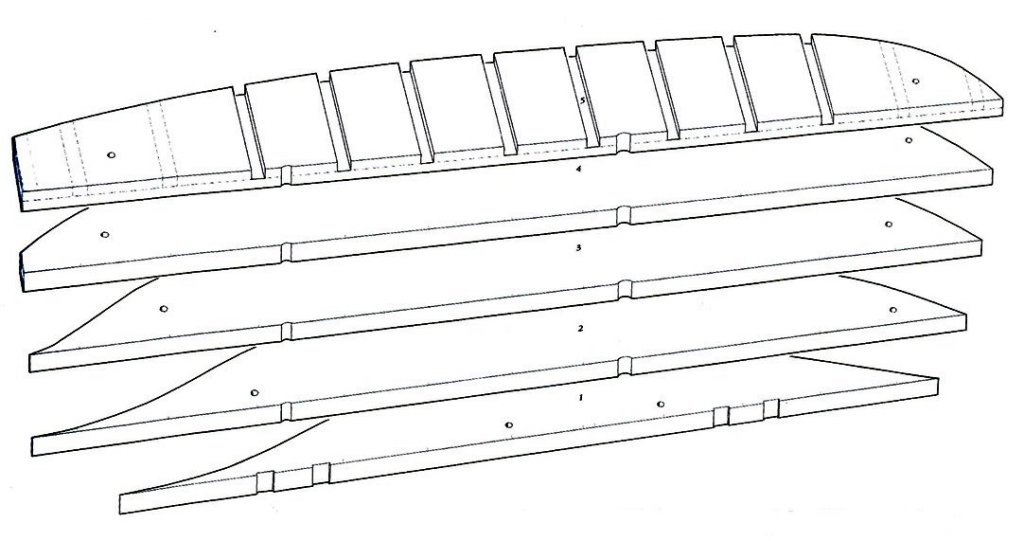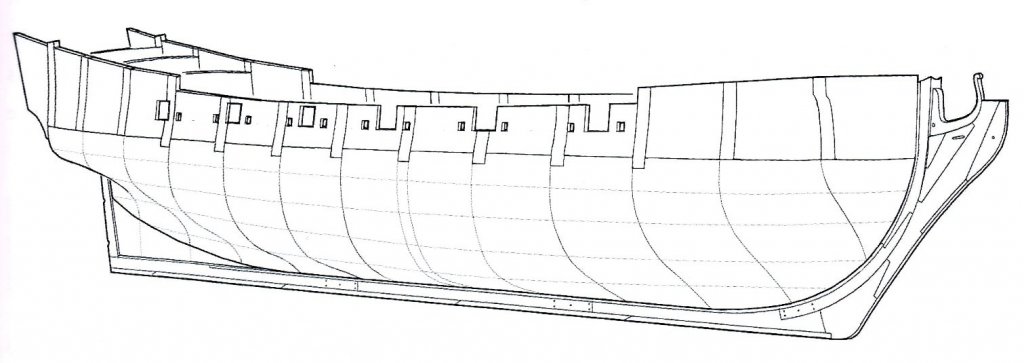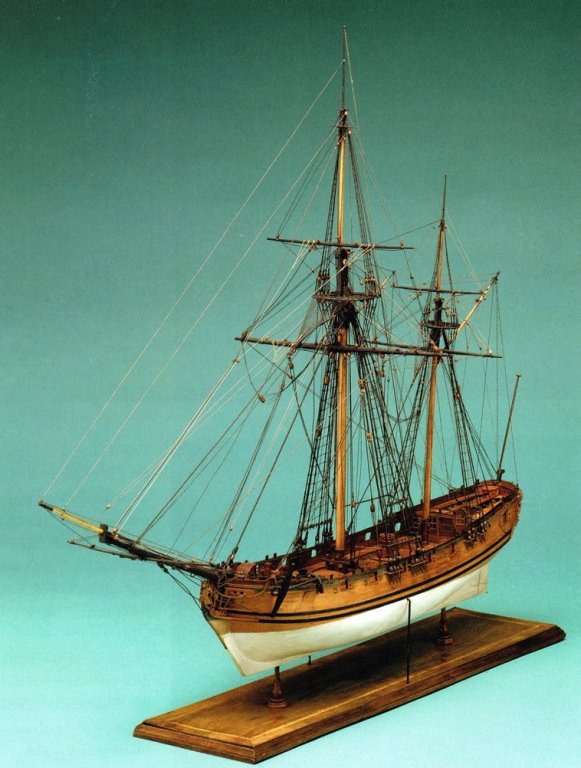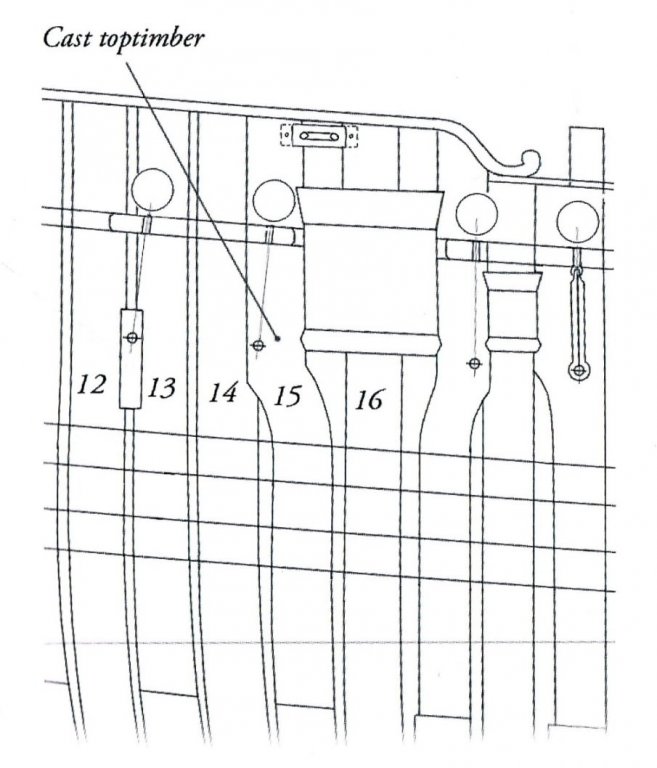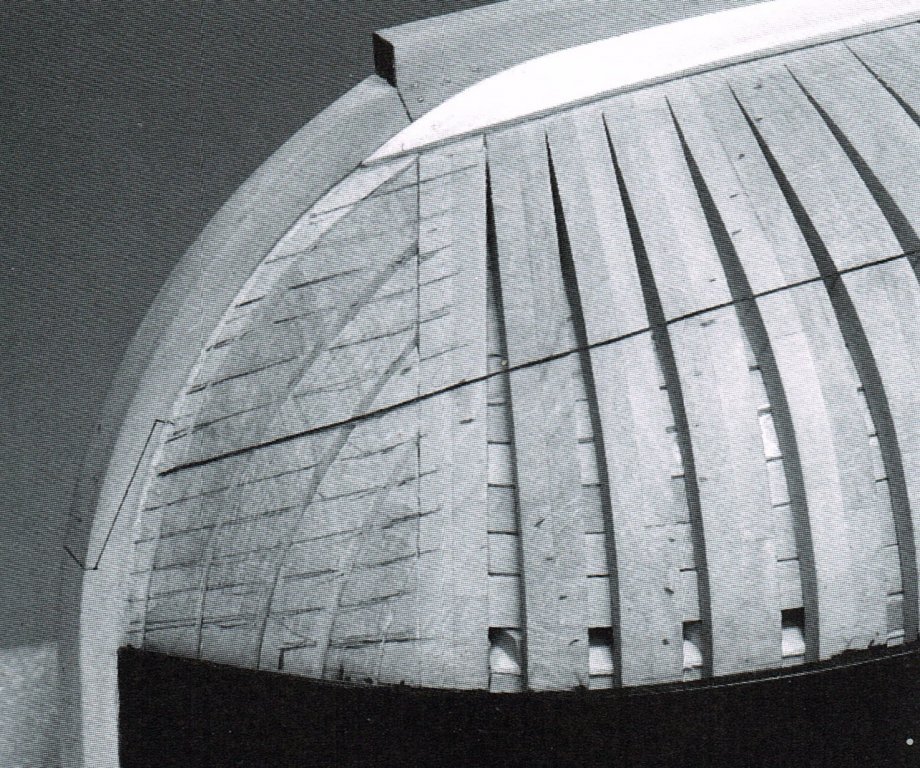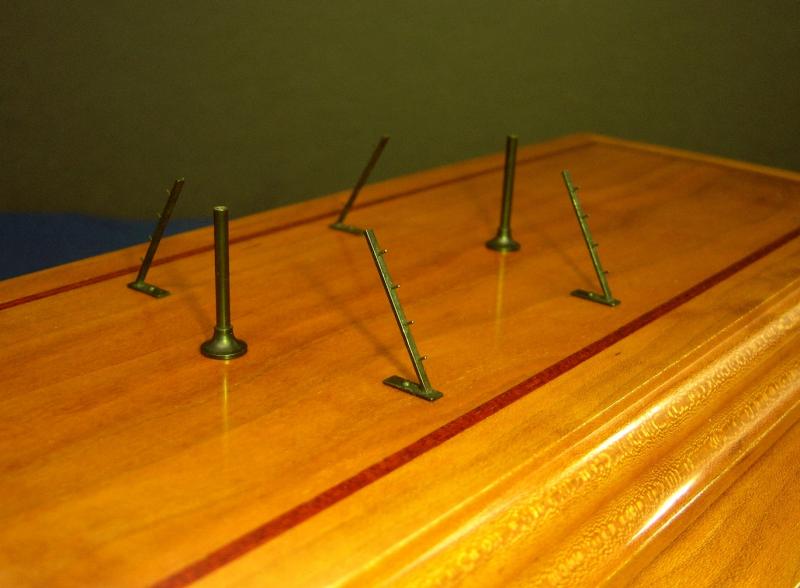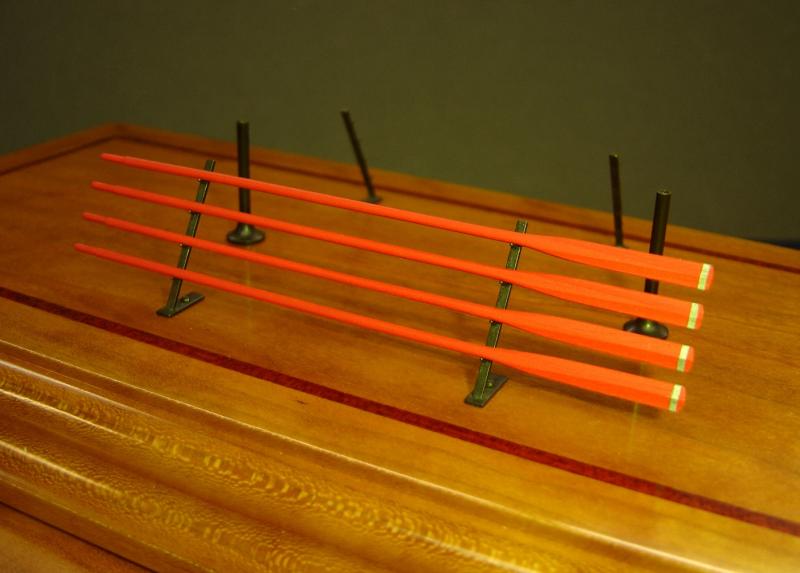-
Posts
175 -
Joined
-
Last visited
-
 Tossedman reacted to a post in a topic:
18th Century Longboat by BobF - FINISHED - Model Shipways - 1:48 - Tri-Club
Tossedman reacted to a post in a topic:
18th Century Longboat by BobF - FINISHED - Model Shipways - 1:48 - Tri-Club
-
 AJohnson reacted to a post in a topic:
The Hayling Hoy of 1759-1760
AJohnson reacted to a post in a topic:
The Hayling Hoy of 1759-1760
-
 Ghost029 reacted to a post in a topic:
18th Century Longboat by BobF - FINISHED - Model Shipways - 1:48 - Tri-Club
Ghost029 reacted to a post in a topic:
18th Century Longboat by BobF - FINISHED - Model Shipways - 1:48 - Tri-Club
-
 Archi reacted to a post in a topic:
The Rogers Collection of Dockyard Models Volume II
Archi reacted to a post in a topic:
The Rogers Collection of Dockyard Models Volume II
-
 maddog33 reacted to a post in a topic:
18th Century Longboat by BobF - FINISHED - Model Shipways - 1:48 - Tri-Club
maddog33 reacted to a post in a topic:
18th Century Longboat by BobF - FINISHED - Model Shipways - 1:48 - Tri-Club
-
 maddog33 reacted to a post in a topic:
18th Century Longboat by BobF - FINISHED - Model Shipways - 1:48 - Tri-Club
maddog33 reacted to a post in a topic:
18th Century Longboat by BobF - FINISHED - Model Shipways - 1:48 - Tri-Club
-
Sonofasonofasailor started following BobF
-
 EricWilliamMarshall reacted to a post in a topic:
The Hayling Hoy of 1759-1760
EricWilliamMarshall reacted to a post in a topic:
The Hayling Hoy of 1759-1760
-
 maddog33 reacted to a post in a topic:
18th Century Longboat by BobF - FINISHED - Model Shipways - 1:48 - Tri-Club
maddog33 reacted to a post in a topic:
18th Century Longboat by BobF - FINISHED - Model Shipways - 1:48 - Tri-Club
-
 Duanelaker reacted to a post in a topic:
18th Century Longboat by BobF - FINISHED - Model Shipways - 1:48 - Tri-Club
Duanelaker reacted to a post in a topic:
18th Century Longboat by BobF - FINISHED - Model Shipways - 1:48 - Tri-Club
-
 Duanelaker reacted to a post in a topic:
18th Century Longboat by BobF - FINISHED - Model Shipways - 1:48 - Tri-Club
Duanelaker reacted to a post in a topic:
18th Century Longboat by BobF - FINISHED - Model Shipways - 1:48 - Tri-Club
-
 BobF reacted to a post in a topic:
1:24 Lowell Grand Banks Dory - by Model Shipways - Kit Review
BobF reacted to a post in a topic:
1:24 Lowell Grand Banks Dory - by Model Shipways - Kit Review
-
 BobF reacted to a post in a topic:
1:12 Norwegian Sailing Pram - by Model Shipways
BobF reacted to a post in a topic:
1:12 Norwegian Sailing Pram - by Model Shipways
-
 BobF reacted to a post in a topic:
The Ketch-rigged Sloop Speedwell of 1752 Volume II, Hull Details and Rigging
BobF reacted to a post in a topic:
The Ketch-rigged Sloop Speedwell of 1752 Volume II, Hull Details and Rigging
-
The Ketch-rigged Sloop Speedwell of 1752 Volume II, Hull Details and Rigging by Greg Herbert and David Antscherl Distributed by: Sea Watch Books, LLC, Florence, Oregon 8 1/2” x 11”, hardcover, 184 pages, bibliography, index ISBN 978-1-7320162-5-5 It is appropriate that, with Bob Friedman’s impending retirement, the final book being published by Sea Watch Books, LLC should be authored by David Antscherl and Greg Herbert. These three gentlemen have teamed up to produce some benchmark references for our hobby. Among the most noteworthy are the classic Swan series The Fully Framed Model, HMN Swan Class Sloops, 1767-1780, The Royal Navy Fireship Comet of 1783, and The Hayling Hoy of 1759-1760. The final offering, The Ketch-rigged Sloop Speedwell of 1752, Volume II, completes the treatise on a project that offers the modeler a subject that is attractive, less complex, and at 1:48 scale is of a reasonable size. The book is broken down into three basic segments. The first chapters discuss the final hull details and remaining fittings. Although Herbert’s version is not painted, the opening notes provide information on a possible color scheme if you wish to paint your model. The description is based in a fine example in the Royal Museums Greenwich (RMG) Collection. This model is one of the primary references used throughout the book. When researching a project, David Antscherl invariably discovers unique features about the subject. One such item on Speedwell is the heads (privies) that are located within the forecastle. Their unique shape and location are not seen on contemporary models very often. Herbert’s approach for fabricating these pieces is noteworthy. Speedwell is a small vessel, but she possesses many graceful features. Two of them are the stern lights with their pleasing pilasters, and the various ornate components that adorn the bow of the ship. They include the cheeks, hair brackets, cat head supporters, main and lower rails, and those pesky head timbers. Herbert goes into considerable detail, and makes extensive use of templates for all of these challenging pieces. The next segment deals with the carved works, and is discussed in great detail. Arguably, this portion of Volume II, by itself, may be worth the cost of the book. For such a small ship, Speedwell possessed considerable ornamentation. The authors obtained a copy of a letter addressed to the Admiralty Board that carefully outlined the scope of this work and its cost. The letter included a list of carved works with their overall dimensions. It’s interesting to note that the information matched very closely the carvings on the RMG model. The authors start out with an explanation of the two different processes that are used when producing miniature carvings. They are the subtractive process and the additive process, The former version is as the name implies, the removal of material from a larger block, usually wood. The additive technique involves the use of a modeling clay that can be heat-hardened. In addition to suggested brands, cautions are also provided when using this material. One interesting recommendation is the use of maquettes or study models prior to creating the final pieces. These are made from a non-hardening clay and can be up to four times the size of the final work. The author feels that this helps improve the modeler’s perspective when working out three dimensional problems on the actual piece, both additive and subtractive. The final portion of this treatise is devoted to the construction of the masts, spars, blocks and rigging. An odd feature on the RMG model is the tops. Rather than the usual plank and batten construction, these are made with very coarse grating that features apertures that measure about 6” across. Although they appear to be original, there is little doubt that they would have presented a safety hazard for topmen. These unique pieces are included in the plans, and a method is provided for their construction. However, Herbert opted for the conventional tops that were in vogue at that time, and he provides a detailed explanation for their construction. It is interesting to note that nowhere in this second volume do photographs appear of Herbert’s rigged model. At the beginning of the final chapters that deal with rigging, David Antscherl explains the reason for this. He states: “As our publisher is retiring (2020), we made the decision to complete this book before Greg was able to rig his model. Therefore there are no photographs of this process. However, much of the rigging is very similar to that described in Volume IV of the The Fully Framed Model, HMN Swan Class Sloops 1767-1780, and we refer you to that book. It should be easy to follow the descriptions and illustrations provided in both volumes together with the accompanying rigging plans in this book to successfully complete a model.” The four rigging plans that accompany this book are all to 1:48, and are well done. They are based on spar dimensions provided in a draught and the contemporary model of Speedwell in the RMG collection. Antscherl states that the rigging was interpreted from photographs, and may be suspect in some cases since all the lines may not be entirely original. In addition to the plans, this final Sea Watch offering features 7 pages of color photos, an index and bibliography. At a scale of 1:48, this treatise will produce a model with a modest overall hull length of 21 1/2”. Add the massive bowsprit and jib-boom, and its length increases to over 33 inches. The Speedwell was a unique, yet beautiful ship. Whether you are inclined to build her or not, “The Ketch-rigged Sloop Speedwell of 1752” Volumes I and II would be an excellent addition to any ship modeler’s library. These books are highly recommended. BobF
-
Modeling The Extreme Clipper Young America 1853 Volume 3: Masting and Rigging By Edward J. Tosti Distributed by: SeaWatchBooks LLC, 2019 9“ x 12”, hardcover, dust jacket, 256 pages Illustrations, drawings, CD, bibliography, index ISBN 978-1-7320162-4-8 www.seawatchbooks.com, seawatchbooks@gmail.com In an opening Forward, SeaWatchBooks, LLC Publisher, Bob Friedman, offers some thoughts on this remarkable book and series: “This is the third and final volume on building the clipper, Young America, 1853. Ed Tosti’s work on this subject reaches the pinnacle of ship modeling art and technique. I believe the three volumes will stand as an ultimate master class on all needed skills including painstaking research, drafting of plans, techniques, woodworking, metal work, and most of all in the art of masting and rigging. Ed’s ubiquitous talents also include the creation of custom tools and jigs to solve particular construction challenges. In my sixty years of being involved in the world of model ships, I have never experienced a work as Ed’s Young America, and I doubt we will see anything like it in the future.” This writer couldn’t have stated it any better. There is no doubt that Volume 3 puts an exclamation point on a series that will be a benchmark reference for mid-nineteenth century merchant ship construction in general, and model ship building techniques in particular. Volume 3 is basically broken down into three segments. The first deals with construction of the masts, yards, spars and their fitting out with hardware and furniture. The second portion concentrates on producing the rigging elements such as rope, chain, wire and blocks. The remainder of the book puts it all together, and is appropriately called “rigging ship.” Tosti points out that unlike the first two books, which follow a sequence of steps for building Young America, number three breaks away from this practice, and groups the construction of similar components into a single chapter. One example would be all the spars described in Chapter 27. The author emphasizes that he is not implying that all the spars should be made at one time. He states that which components should initially be constructed should be left to the modeler. Becoming familiar with the contents of this book will be of considerable assistance in the planning phase. For those that still feel that some sort of structure should be offered, Tosti states that Chapters 34 and 35 provide ideas and suggestions for sequencing. This volume also comes with a CD that supplements the contents in the book, and includes posts from the author’s online build log. The order in which these posts appear coincides with the sequence Tosti used for the rigging process. The author’s attention to detail is amazing. Other unique bits of information on this disk include belaying plans, conversion charts for the two scales featured in this treatise, printing instructions for the attached PDF files, and a simplified rigging list for those wanting to cut back on the daunting task of rigging a clipper ship. Volume 3 comes with 13 sheets of plans that relate to rigging Young America, yet none of them provide a highly detailed overall rigging plan. This is due to one of the more remarkable aspects of Volume 3, Appendix 1. Referred to as the “Rigging List”, this extensive table alone might be worth the cost of this book. It fully defines each rigging line, and is the key to the entire rigging process. This appendix includes line naming, descriptions, size, type, color, serving requirements, needed components, and setup notes. This last item is especially important since these notes go hand in hand with identification numbers that are assigned to each line. These numbers can be found on many drawings, diagrams and photos, and facilitate prefabrication while also identifying connections, belaying points and routings. A common feature that appears in all of Ed Tosti’s books is the crossed file and hammer symbol. This diagram is featured in the index, and next to the headers for various construction procedures. It indicates that a special tool/fixture was used to fabricate certain elements of the model. It appears at least 10 times in Volume 3. One of the most common fittings found on 19th century ships were the many types of iron bands, and the author devotes considerable attention to their fabrication, mounting, shape and coloration. It was not uncommon for different examples to be utilized on the same mast. There is a second appendix, which contains a list of all the large format drawings included with each volume. This list does not include the small format drawings found on CD’s. A total of 24 drawings are noted, which represents an impressive portfolio of plans. This book also includes a very nice 8 page full color section. One interesting aspect of Volume 3 is the use of italicized words that may be unfamiliar to the reader. Tosti states that rather than including an extensive glossary, these uncommon words are italicized when first used, and include some definition. Although this volume compliments the first two books, it possesses enough information to be a stand alone reference on 19th Century rigging techniques. Ed Tosti is to be congratulated on a most remarkable achievement. Needless to say, Young America, 1853, Volume 3 is highly recommended! Reviewed by BobF
-
The Purpose-Built Confederate Blockade Runner HOPE, 1864 Text and Plans by Vincent McCullough Text and Model by Gilbert (Gib) McArdle Distributed by: SeaWatch Books, LLC, 2019 8 1/2” x 11” format, hardcover with jacket, 128 pages, 8 page color section, bibliography, 10 sheets of detailed plans CD w/printable templates ISBN 978-1-7320162-3-1 This latest offering from Seawatch Books, authored by Vincent McCullough and Gilbert (Gib) McArdle, starts out with a brief, yet concise, comparison of the North and South in the American Civil War. The primary focus is on the economic and industrial capabilities of both combatants. The South’s reliance on cotton, and its ability to supply European markets, particularly Great Britain, was especially crucial to its chances for independence. As the war dragged on, the increasing effectiveness of the Northern blockade seriously impacted the South’s ability to wage war. Thus, the purpose built blockade runner was developed. At the time, these vessels represented cutting edge maritime technology. When launched, the Hope was larger than average. In spite of her remarkable speed, she would not have a long career as she fell prey to a Northern blockader during her second attempt at entering a Confederate port. The Purpose-built Confederate Blockade Runner, Hope, 1864, is a well researched book that comes with 10 sheets of detailed plans. Although not true “primary” documents, photographic copies of a set of engravings of the body, half breadth, sheer plans, inboard profile view, and sail plan were obtained from the Archives at the Merseyside Maritime Museum in Liverpool. (The Hope was an English-built vessel.) The author explains how these documents were used to develop a set of CAD generated drawings to the desired scale of 1:96. Almost half this treatise is devoted to the aforementioned plans, and subsequent details on various deck structures. This latter information was obtained from Shipbuilding, Theoretical and Practical, a book that was published in 1869, only 3 years after the Hope was launched. This is an intriguing segment of The Purpose-built Confederate Blockade Runner Hope—1864 since it discusses many of the more complex structures found on the vessel. They include the paddle wheels, paddle wheel box, and the uniquely raked funnels. For scaling purposes, there are notations in the drawings indicating, in inches, the true dimensions on the actual ship. The authors provide detailed information on how the feathering paddle wheels functioned. The segment of the book on plans concludes with a discussion of the Hope’s spars, rigging, sails, and belaying points. Since information on these items was sketchy at best, the author admits that some of what appears on the plans is conjectural. However, the best references available were utilized while researching this model. This applied to the belaying plan in particular. Being fore and aft rigged, with the two masts so widely separated, the Hope should not present much of a problem during the rigging stage of the model. The construction phase of this treatise begins with a discussion on the templates found on the CD that accompanies this book. There are three types provided. Individual station templates enable the modeler to check for the outside shape on a solid hull model, or a hull being made with lifts. Note that stem and stern profile templates are also provided. Bulkhead templates are similar to the previous type, but have one important difference. They allow for a layer of planking on the hull and deck. One nice touch is the inclusion of a notch for a spine, which is also derived from a provided template. The spine serves as the keel, stem and stern pieces, and helps maintain correct positioning and alignment of the bulkheads. Lift templates are the third version, which can be used to construct a “bread and butter” style hull. Hole locations are provided in each template that allow dowels to be inserted for proper alignment of the lifts. The model featured in this book was built utilizing this last method, which eliminates the need for hull planking. Hope had a steel hull, and some great tips for simulating the hull plating are offered. The paddle boxes and paddle wheels are probably the most intriguing and challenging assemblies on the Hope, and would most likely preclude this model from being attempted by a novice. McArdle provides ample information and a fair number of photos that outline the construction sequence for the paddle boxes, but the same cannot be said for the paddle wheels, which employ silver soldering and brass etching techniques. The text that describes this assembly is somewhat brief, and could leave modelers relying on their own resourcefulness. Next to the previously mentioned assemblies, the smokestacks are probably the most striking feature on the model. With their 76-degree rake they are surprisingly complex. Yet, the author makes quick work of these while offering numerous hints and tips for their construction. By now it should be evident that constructing the Hope will require some techniques that may be foreign to many of us. Another such challenge is vacuum forming the “Turtle Back” deck located at the bow. McArdle realized this, and tries to be as concise as possible when outlining how he created this piece. He was especially proud of this part since it was also his first attempt at this procedure! The Hope had decorative carvings at the stern and on the paddle boxes. Sketches of this artwork are provided in one of the files on the CD. McArdle opted to use the photo etch process to duplicate these decorations. This book concludes with the installation of the masts, rigging, flags, and ship’s boats. An Appendix is also provided that gives a partial transcription of the original purchase agreement for the Hope. This document includes all specifications that were relevant to the construction of the ship itself. The CD Rom that accompanies The Purpose-built Confederate Blockade Runner, Hope, 1864, contains material not found in the book. There are two directories on the disk. Measured Drawings contains information on virtually every structure found on the deck of the Hope, as well as the paddle decks, paddle boxes and paddle wheels. The Templates directory contains 8.5”x11” drawings intended to assist in the construction of the 36.5” hull. If you are looking for a well researched, unique project that will challenge your abilities, and help you develop new skills, The Purpose-built Confederate Blockade Runner, Hope, 1864, would certainly be worth considering. Reviewed by BobF
-
● Swan Class Sloops Plans Set ● By David Antscherl & Greg Herbert SeaWatchBooks LLC, Florence, Oregon, 2019 A Portfolio of 7 Plans, $60 + S&H Without a doubt, one of the finest references on Eighteenth Century men of war is the four-volume set, The Fully Framed Model, HMN Swan Class Sloops, 1767—1780, by David Antscherl and Greg Herbert. This benchmark series was supplemented by a set of plans marketed by Antscherl and Herbert that assisted the model maker who wished to build a fully framed model. Originally created by Mr. Antscherl, they were used by Herbert while he was building “Pegasus,” which is the basis for Volume III in the series. Not long ago it was announced that these plans would no longer be available. Bob Friedman of SeaWatchBooks stepped in, and worked out the details that resulted in a portfolio of seven plans being offered for a limited time at a reasonable price. Drawn to a scale of 1:48, this set provides the sheer, profile, half-breath, and body plan that represent a generic Swan class vessel. Drawings are also provided for all the fore and aft cant frames, hawse timbers, transoms, and deck beams. Patterns are featured for each pair of frames, and include the locations for the chocks, spacer blocks and scarf joints. One nice touch concerning the frame drawings is the use of vertical and horizontal reference scales. These lines measure 5” in length, and confirm the accuracy of the plans. Every frame pattern was checked, and they were all perfect. This package of drawings is not entirely devoted to the hull. An added bonus is an entire sparring plan that is applicable to sixth rate vessels. Every yard, mast, boom, and top are featured, along with full size dimensions. Attention to detail is quite evident on this 20” x 34” sheet. It is exemplified by the details provided for a fish davit and fire boom, which are rarely covered by most references. In addition to these plans, and the four-volume set The Fully Framed Model, HMN Swan Class Sloops, 1767—1780, copies of contemporary plans of a “Swan’” class vessel from the Royal Museum Greenwich will be needed to complete an accurate model. Twenty five of these sloops of war were constructed, and “as built” plans exist for many of them. However, some plans offer more details than others. A list, and ordering information, can be found in Volume 1 and at www.admiraltymodels.com . BobF
-
 BobF reacted to a post in a topic:
Great Naval Battles of the Ancient Greek World
BobF reacted to a post in a topic:
Great Naval Battles of the Ancient Greek World
-
 BobF reacted to a post in a topic:
The Ketch-rigged Sloop Speedwell of 1752
BobF reacted to a post in a topic:
The Ketch-rigged Sloop Speedwell of 1752
-
 BobF reacted to a post in a topic:
The Ketch-rigged Sloop Speedwell of 1752
BobF reacted to a post in a topic:
The Ketch-rigged Sloop Speedwell of 1752
-
 BobF reacted to a post in a topic:
The Ketch-rigged Sloop Speedwell of 1752
BobF reacted to a post in a topic:
The Ketch-rigged Sloop Speedwell of 1752
-
The Ketch-rigged Sloop Speedwell of 1752 Volume I, The Hull by Greg Herbert and David Antscherl Distributed by: SeaWatch Books, LLC, Florence, Oregon 8 1/2” x 11”, hardcover, 238 pages, bibliography, index ISBN 978-1-7320162-1-7 No doubt, when modelers realized that SeaWatch Books’ latest offering, The Ketch-rigged Sloop Speedwell of 1752, would be authored by Greg Herbert and David Antscherl, the level of anticipation ramped up considerably. The last time these two gentlemen teamed up, the net result was the benchmark Swan series The Fully Framed Model. This latest work outlines the construction of a class of vessel not modeled very often. Built with light scantlings, and armed with 8 three pounders and 10 swivels, Speedwell’s primary task was to track down privateers and smugglers. Her career was long, but uneventful, and she would end her service in the Royal Navy as a fire ship renamed Spitfire. This first book provides an illustrated guide for building the hull, and offers the modeler detailed information for constructing the model three different ways. These methods are plank on frame (POF), plank on bulkhead (POB), and solid hull using the lift method (LIFT). The authors deal with the different, and, in many cases, similar complexities for constructing the hulls by providing tabs on each page that are applicable to each method. The five sheets of plans that accompany this book were drawn by Mr. Antscherl, and the attention to detail is most noteworthy. An excellent example is the bevel lines incorporated into the bulkhead drawings, and the recommended locations for the pedestal mounting nuts. This last item is not addressed very often by authors. The first chapter discusses the various references used to create the plans included with this book. Three draughts from the Royal Museums Greenwich, and a contemporary model of the Speedwell were the primary sources. It is interesting to note that they did not always agree with each other. Antscherl feels that this is attributable to the fact that the three draughts reflect first the original design, then the alterations made at Chatham, and finally as the vessel was built. The fact that Speedwell was revised during construction resulted in a number of unique features. For those wanting to build the framed up version, the most notable might be the large number of cast toptimbers located around the gunports. Normally, this situation was avoided as much as possible when designing a ship. This helped cut labor and material costs. David Antscherl starts out Chapter Two by making an interesting statement: “This chapter will be of interest only to those who wish to develop their own working drawings of other vessels from Royal Museums Greenwich or other contemporary plans. Otherwise, turn to Chapter Three.” This no doubt reflects the practical attitude that was taken when this book was written. Nevertheless, the information provided in this chapter is well worth understanding. There are also two appendices in this chapter. Appendix 2.1 discusses the anomalies that occurred between the three draughts and the RMG model. Antscherl explains these differences, and provides reasons why he chose one reference over the other. Appendix 2.2 features three folios taken from the Navy Board’s Progress and Dimensions Book. These were kept as part of the mid-eighteenth century expenditure records. This short segment makes for some fascinating reading. With Chapter Three, Greg Herbert begins the journey that will take the reader through three different types of hull construction. He points out up front that the reader should possess a basic knowledge of ship modeling, terminology, and eighteenth century ship construction. Herbert implies that this book does not contain in-depth descriptions and techniques on how to build a framed model. For that he recommends The Fully Framed Model, HMN Swan Class Sloops, 1767-1780. After discussing the construction of the keel and stem assemblies, which would be common to all three hull types, Herbert addresses the plank on bulkhead version. It’s interesting to note that the central spine is a component that is common to both the plank on bulkhead and lift versions. Nevertheless they are not identical, so selecting the appropriate pattern from the plans is important. The author provides some nice tips for cutting the rabbet, shaping the central spine, installing filler blocks, and using captive nuts for mounting the model during construction as well as when it is completed. With the majority of the models on the market today being of the plank on bulkhead variety, this segment of the book makes a great tutorial for the early stages of building these kits. The plans for the lift hull model provide patterns for five 1/2” thick layers for each side of the hull. Essentially, the modeler is building two half-hulls that are eventually joined to the central spine. This approach alleviates the need for wider, more expensive stock, and allows the hull to be more easily hollowed out if you wish to detail the interior. The upper most lift can be divided into two 1/4” layers, which eliminates the need for cutting slots that will accommodate the partial bulkheads. The reader is also reminded that due to the tumblehome amidships, the lower face of each lift may actually be wider at this location on the hull. One nice touch is the fact that all the lift patterns feature drill center marks for locating pegs. They prevent slippage during the gluing up and clamping process. When assembled and shaped, the patterns will provide the hull shape to the inside of the outer planking. After the partial bulkheads are in place, the hull follows the same pattern as the plank on bulkhead version. This includes installation of filler blocks between the partial bulkheads, marking out the gunports and sweep ports, and attaching the side counter timbers. At this point, Herbert turns his attention to the plank on frame hull. The next seven chapters are devoted solely to its construction. Herbert’s methodical approach while constructing all the components is most noteworthy. One of the more interesting aspects of this book is the effort put forth by the authors to properly interpret the draughts and Royal Museums Greenwich model of Speedwell. An excellent example was determining whether the quarter badge lights were real or dummies. Only after very close examination of the RMG model, and considerable deliberation, did the authors feel that their decision was the correct one. Nevertheless, the builder is supplied with alternate framing plans for that area of the model if they wish to proceed in the other direction. The final 12 chapters are, for the most part, applicable to all three hull types. Herbert’s workmanship is outstanding, and he offers numerous hints and tips. Hull planking is discussed in considerable detail in volume 1, which is a big plus for those not well versed in this important aspect of model ship construction. Herbert simplifies the process by breaking down the procedure into component steps, which include butt-joint patterns, lining off the hull, main wale construction, treenailing, and spiling. A properly laid out and proportioned garboard strake receives special attention. Volume 1 concludes with two appendices. Appendix A discusses chocked joints, and Appendix B outlines the fabrication and use of molding cutters. This latest SeaWatch offering features 8 pages of color photos, and, as previously mentioned, a packet of plans consisting of five sheets. At a scale of 1:48 they will produce a model with an overall hull length of 21 1/2”. This review has touched on only a few of the many aspects this work has to offer. “The Ketch-rigged Sloop Speedwell of 1752” would be a noteworthy addition to any ship modeler’s library. This book is highly recommended. BobF
-
The Rogers Collection of Dockyard Models At the U.S. Naval Academy Museum Volume II Third Rates by Grant H. Walker Distributed by: Sea Watch Books, LLC, Florence, Oregon 10” x 11.75”, Hardcover, 299 pages, index ISBN 978-1-7320162-2-4 One of the most anticipated books to be offered by Sea Watch Books has finally arrived. Grant H. Walker’s 2nd volume of The Rogers Collection of Dockyard Models at the U.S. Naval Academy Museum, which focuses on the third rates in the collection was well worth the wait. With over 800 colored photos this offering is a visual treat. For the sake of comparison, many illustrations are also supplemented by numerous photos from other sources, which include the National Maritime Museum archives and private collections. There are ten 3rd Rates in the Rogers Collection. Nine are English and one is a rare Spanish two-Decker from the latter part of the 18th Century. Mr. Walker presents these models in chronological order beginning in the 1660’s, and culminating with the El Terrible in the 1780’s. They are fairly consistent in scale, and comparisons are made, which allow the reader to better understand how this class of vessel evolved over an extended period of time. Considerable insight is provided in this respect. All ten segments begin with a table that provides specifications on the featured model, and, in most cases, compares the subject with establishments and/or comparable vessels built during that period. It’s interesting to note that the model’s dimensions may be similar but not exact. Walker points out that this is further complicated by the fact that the Establishments of 1706 and 1719, which set the standards for construction of many of these ships, are quite close to each other in many respects. Confusion concerning the scale of these models often resulted in many historians misstating what rate the models represented. This made identification all the more difficult. These tables are followed by introductions that discuss numerous facets of the model and/or the ship or class of ship they may represent. Interesting facts are brought to light concerning the men and political climate that influenced the vessel’s design. In one essay the author shares the circumstances under which Fred Avery, the Naval Academy Museum’s first curator, discovered that model no. 34, possibly the 70-gun Monmouth of 1718, was a split hull. A photo of this amazing dockyard model graces the dust jacket of this book. The first vessel discussed is an unidentified English 3rd Rate of 50-60 guns, which dates to the Commonwealth Period of 1650-1654. It is one of the oldest dockyard models in the world. The author immediately sets a remarkable standard for the entire book with magnificent external and internal photos. These provide the basis for considerable discussion concerning historical construction techniques on the actual ships, and later restoration efforts on the models. This last item is one of the more intriguing aspects of the book. As every model is described, it becomes more apparent that this is a dominant issue that often impacts these beautiful dock yard models in a negative manner. Much of the repairs on these two-deckers were performed by modelers in the 20th Century after Rogers obtained each piece. Grant Walker makes a valiant effort to identify this work and rationalize why modern-day modelers made changes to these remarkable pieces that were questionable at best, and, in some cases, amateurish, or downright wrong. Walker also points out instances where earlier restorations or repairs also exhibit poorly executed workmanship, which is even evident to the untrained eye. Nevertheless, Mr. Walker is quick to point out that these models are still true historical treasures While maintaining these amazing models, one difficult decision that had to be made was whether anachronisms should be corrected since they are part of the provenance of the model. An excellent example is one of the jewels of the collection, the Prince Frederick, 70 guns (1714/15). The author provides considerable insight as to how the final decision was made to make the changes, and what they were. Only six of the ten 3rd rates in the collection are referred to by a name, and even these, to some extent, can be questioned due to features they possess that are inconsistent with the specifications for vessels that were built during those periods. Nevertheless, Mr. Walker makes a concerted effort to link these models with known facts. One excellent example is Model No. 8, an 80-gun ship of the 1690’s, which Walker refers to as “Associated with the Sussex of 1693.” This pristine model offers a number of features that narrow its identity down to three possible choices. However, there is one bit of evidence hidden in plain sight that would apparently remove all doubt that the model is indeed Sussex. Nevertheless, Walker takes a cautious approach, and offers possible reasons for this not being the case. This mindset serves the author well and is evident throughout the book. In numerous cases, when evaluating these models, Walker offers reasons why he disagrees with earlier experts such as RC Anderson, Henry Culver, Fred Avery, and C. G. Davis. This all makes for interesting reading. The essays on all ten 3rd rates contain numerous interior images of the models. These are the result of photographs taken with a fiber optic endoscope. The model most subjected to this type of research with modern scientific instruments was the 74-gun Canada. The author relates a fascinating story about how this pristine model was originally thought to be Triumph of 1764. Through a chance occurrence, it was proven to be otherwise, and a lengthy process of detective work ensued. The research would be aided, for the first time ever, by X-ray technology. This magnificent model would grudgingly give up its secrets, only to present new mysteries. The author refers to this British 3rd Rate as one of the most challenging models in the Rogers Collection to identify. It was only after employing CT scan technology that a better understanding of this model ensued. The Rogers Collection of Dockyard Models, Volume II, features an oversized 10” x 11 3/4” format printed on gloss paper. This book is a remarkable achievement and would be an excellent addition to the library of any maritime historian or model ship builder. Reviewed by BobF
-
 BobF reacted to a post in a topic:
The Hayling Hoy of 1759-1760
BobF reacted to a post in a topic:
The Hayling Hoy of 1759-1760
-
 BobF reacted to a post in a topic:
Seawatch Books
BobF reacted to a post in a topic:
Seawatch Books
-
The Hayling Hoy of 1759 -1760 by David Antscherl Distributed by: Sea Watch Books, LLC, Florence, Oregon 8 1/2” x 11”, hardcover, 200 pages, bibliography, index ISBN 978-1-7320162-0-0 On the dust jacket of David Antscherl’s latest book, “The Hayling Hoy of 1759—1760” it states “A first fully-framed building project.” Indeed, the author certainly delivers on that statement. In his opening remarks Antscherl reinforces this claim by declaring that the book is intended to introduce the ambitious model-maker to building a fully framed model while avoiding some of the complexities of a British man of war. The author goes on to offer some reasons for choosing the hoy for this project. They include the fact that these craft had a less complex framing system, they also lacked gun ports or sweep ports, and the rig was comparatively simple. This vessel also makes an intriguing subject since it is not commonly modeled. In spite of the fact that the Hayling Hoy was an everyday, knock-about service vessel, she possessed some graceful features. The scroll head is only one of two carvings on this model, the other being located on the tafferel. Nevertheless, they add a very pleasing quality to this small craft, especially the scroll head, which flows into the cheeks and cathead supports. Antscherl makes a valiant effort to provide the reader with some historical background on the hoy, but admits that a true distinction of this vessel is blurred by other craft similar in size, rig, or even what the local populace might have considered a hoy or lighter. The only true difference that the author could offer was the fact that only hoys carried passengers as well as cargo. The reader is then provided with a brief history of the Hayling, which can trace its origins back to the same shipyard that built Agamemnon and Indefatigable, both 64 gun ships of the line. The third vessel to bear the name, she would go on to have a very lengthy career of 22 years. The modeler is also provided with information on the drafts obtained from the Royal Museums Greenwich that were used to research this vessel. In numerous cases, he had to utilize drafts of other lighters and hoys from the same period, which provided details not included in the Hayling drafts. It’s interesting to note that “as designed”, this hoy would have carried a compliment of eight swivel mounts. The “as launched” draft, which was the primary reference for this model, does not reflect this feature. To the untrained eye, the hull of the Hayling may appear to be pretty straight forward, but this is not necessarily true. The author provides the reader with many notable differences. One example occurs back aft where this hoy features a square stern and a timber loading port. Almost all of this workboat’s frames are doubled, and lack chocks or scarfs, which simplifies construction. The one exception is the dead flat frame, which is composed of a single layer that requires reinforcing. Antscherl provides an easy means of scarfing and chocking this frame. The main hatch with its coamings, ledges, battens, and perimeter framing may appear to be a simple structure, but this is not the case. Antscherl provides a fair amount of detail in describing how these were constructed. His technique for fabricating the hatch cover triangular shaped ring-bolts is simple, yet effective. Antscherl offers some excellent hints and tips concerning planking the exterior of the hull. The main wale consists of three parallel strakes, and the author provides some first rate suggestions for laying them out accurately. Keeping with the theme of a less complex model, they do not possess anchor stock or top and butt timbers. This is primarily due to the fact that Hayling was intended for harbor service, and was not expected to withstand enemy gunfire. Bottom planking starts with the garboard strake, and works its way up to the wale. This first strake can be key to an excellent planking job, and the author provides some important advice. He then describes his technique for “lining out,” which provides reference points for laying out thread battens that provide a visual hint as to how the strake runs will look. He goes on to explain how he utilizes these planking aids. The most prominent and massive fitting on this craft is the windlass, which measured just under 15 feet in length on the actual vessel. Unlike most modelers who might break this component down into segments, David Antscherl demonstrates his modeling mastery by constructing this piece out of a single blank. A vertical line at the appropriate location on the drafts indicates that the Hayling carried a capstan, but none of the drafts provide the necessary details. The author was forced to refer to other sailing lighter drafts for the required information, which bore some surprising results. His research indicated that their features differed from those found on larger vessels in terms of the number of whelps and the size of the upper chocks. As stated earlier, the scroll head, lower cheeks, upper cheeks, and the cathead supports provide a pleasing appearance to Hayling, but they are also some of the more tedious pieces to construct. Compared to other aspects of this treatise, the author devotes considerable attention to their fabrication. Antscherl admits that he has never seen another draft featuring the passenger awning, which is so prominent on Hayling. Although rather simplistic in appearance, this piece presented some challenges, which included how to represent a canvas cover. One of the final hull sub-assemblies discussed are the stern lights. Like many other components, the author explains how patterns are used to fabricate these fragile pieces. Of the three displayed on Antscherl’s model, no two are the same, which makes the use of these templates even more advantageous. Being sloop-rigged, the Hayling differed from most vessels of her type. The cutter rig was a more common application. Antscherl states that one of Hayling’s drafts indicates that this hoy’s rig was much loftier than would be expected. In spite of this, he decided to omit the jibboom, topgallant mast and topgallant yard. The dimensions for these spars are provided if you wish to show them. All in all, the segment on rigging accounts for approximately 30% of this book, and is quite thorough. Antscherl states upfront that this latest work is designed to be used in tandem with Volume I of The Fully Framed Model, HMN Swan Class Sloops 1767-1780. However, references are also made to Volumes II and IV. The model can be built without the help of these books, but they will certainly expedite the process. This treatise features 8 pages of color photos, and a packet of plans consisting of three sheets. At a scale of 1:48 they will produce a model with an overall length of 26”. This review has touched on only a few of the many aspects this work has to offer. “The Hayling Hoy of 1759-1760” would be a noteworthy addition to any ship modeler’s library. This book is highly recommended. Reviewed by BobF
-
Hello all, I wrote this review for my club's monthly newsletter, and I thought it might be of interest to some of you. BobF A Generic East Coast, Late 19th Century Oyster Sharpie Circa: 1880 — 1890 An Introduction to “Scratch Building” Monograph & Models by Bill Strachan Plans by Al Saubermann Distributed by: The Nautical Research Guild www.thenrg.org/, info@thenauticalresearchguild.org This monograph and plans is the second such offering by the Nautical Research Guild. You may recall that the first was the Continental Galley Washington, which, although billed as an intermediate level POF scratch build, is still a somewhat more complex vessel. Bill Strachan and Al Saubermann have done a masterful job of providing the novice and intermediate modeler with a subject that definitely fills the gap between kit models and a first time scratch building effort. Sharpies are a type of hard-chined sailboat with a flat bottom, extremely shallow draft, and straight, flaring sides. With centerboards and shallow balanced rudders, they were well suited to sailing in shallow tidal waters where oysters could be found. These craft are believed to have originated in the New Haven, Connecticut region of Long Island Sound. Their use would eventually spread up and down the Eastern seaboard of the United States. Strachan begins by offering some encouraging words for the first time scratch modeler, and how “peer pressure” should not influence one’s enjoyment or satisfaction with what they have accomplished. He also provides his own philosophy when it comes to model ship building, which is very practical and reassuring for those not capable of going “full scratch” due to equipment or skill limitations. In many instances, he offers alternate methods for fabricating parts that were made with power tools. The monograph is broken down into five phases. Early on, the author utilizes abbreviations that identify various components used in the construction. Examples would be “BB1” for building board, and “ST” for station template. At first, you might find yourself referring back to these lists often, so making a separate reference sheet might be helpful. The first phase addresses constructing a jig that allows the bottom framing and planking to be built upside down, which simulates actual practice. One critical aspect of this segment is the fabrication of the 11 station templates with their various notches and bevels. Paper templates supplied in the plans help ensure accurate results during this step. With the chine line actually rising above the waterline at the stem, the sharpie hull has a very distinctive shear As a result, the keelson has a sloping shape that gently curves from its point of greatest draft amidships up to the bow and stern. Phase 2 addresses this with the fabrication of a second building jig, which utilizes the “press method” for shaping the strips that form the keelson. Although composed of only four pieces of wood, Strachan goes into considerable detail concerning this piece. Again, templates help ensure the correct shape at the bow and stern of this key assembly. Other components addressed in this phase include the chines and bottom planking. Concerning this last item, the bottom planks can be a combination that varies from 4” to 8” in width, as long as the final result comes out even! The author stresses that test fitting all the pieces before gluing is the key. Phase 3 continues with the forward bottom planking, but also addresses the stem assembly, mast step block, mast logs, rudder related items, removable flooring, center board and trunk, lower side sheer plank, and vertical planked stern. This last item is a unique feature on these craft. The author provides two options, one being more difficult than the other. Nevertheless, both produce acceptable results if one follows the author’s detailed instructions. Can you imagine trying to spile planks that will conform to that transom? Speaking of spiled planks, the sharpie had three of them on each side of the hull. Again, the author provides templates for each one, which saves a lot of time and headaches. It is also interesting to note that the three planks are glued to each other along their edges and at the stem, before the frames are installed. Lots of clamps, and one of the station templates, are used to help with proper alignment. The modeler is offered two choices when constructing the transom flooring. One reflects a construction method used in North Carolina, while the alternate layout, shown in the photo below, portrays a New Haven sharpie. It’s quite evident throughout this monograph that the author believes in giving the modeler options. Although considered a novice/intermediate project, the sharpie does present one challenge. Many of the various scantlings possess subtle bevels and angles. The author makes extensive use of disk and oscillating sanders when dealing with these pieces. He tries to minimize this challenge by providing the actual angles that the sander table should be set at. With the hull structure essentially complete, Phase 4 gets into a lot of the interior scantlings and detail work This includes mast partners, deck beams, deck planking, false wale, and rub and toe rales with scuppers. In addition to all items relating to the rudder, painting and weathering are also addressed. This last item is one of this writer’s favorite segments. The author uses a “layer upon layer” technique that involves lots of Q-tips, one of three different black India solutions, paint washes, chalks, pastels, sharpie markers, and color pencils. In most cases, he recommends that they be applied to components as they are being made. Practicing on mock-ups first is highly recommended. The final phase, number 5, addresses masting, rigging, and saw horses as a way of mounting your model. The author provides two masting and rigging options, a gaff rig and a simple sprit rig. This last phase concentrates on the gaff rig for the most part, since it is the more complex style. The authors technique for fabricating shackles and stropping blocks with galvanized 28-gauge wire is especially noteworthy. There are other handy tips offered in this monograph. Examples are an easily made container for soaking wood strips, miniature clamps made from Acco paper clips, and plank joints “caulked” with a brown Sharpie pen. One nice touch concerning this 277-page monograph is the fact that you can download the instructions off the NRG website at no cost. This will allow you to review Strachan’s work, which is richly illustrated with 441 color photographs and detailed diagrams. References and other sources are also clearly footnoted for the modeler, and the documentation includes a full bibliography. If the Sharpie interests you, a set of plans can be ordered from the home office. The cost is $65.00 plus S&H for members, and $80.00 plus S&H for nonmembers. You will receive 11 sheets. Three of these drawings are used as templates, and include a full-size building board pattern. This monograph provides the modeler with a wide range of options for detailing, paint schemes, sailing rigs, and weathering. No matter what your current skill level may be, this little model offers an alternate choice, or a nice change of pace from more challenging endeavors.
-
Modeling The Extreme Clipper Young America 1853 Volume 2: Deck Facilities & Pre-Rigging By Edward J. Tosti Florence, Oregon: SeaWatchBooks LLC, 2017 9“ x 12”, hardcover, xvi + 224 pages Illustrations, drawings, CD, bibliography, index ISBN 978-0-9904041-9-4 www.seawatchbooks.com, seawatchbooks@gmail.com In his opening remarks, Edward Tosti explains why he opted to include an additional volume into what originally was intended to be a two-volume treatise on modeling the extreme clipper, YoungAmerica 1853. You may recall that it was assumed that a single second book would provide the reader with a completed, fully rigged model. In Volume I, the author made every effort to minimize the need for precision machine tools, thus making the building of Young America more viable for the modeler who has fewer resources and experience. Unfortunately, as Tosti began the second book with the fabrication of various deck machinery, small duplicate parts, or items requiring micro-joinery, it became apparent that the use of these power tools would be more prudent if precision work was going to be maintained. This dilemma forced the author to devote more space to setup, and the use of these tools. Thus, an additional volume was added, which allowed for a more thorough discussion of machining techniques required for the numerous pieces. It would also allow for a more in-depth coverage of the rigging phase later in Volume III. The net result is that Volume II, with its considerable emphasis on setup and use of power tools provides modelers with a unique opportunity to learn new skills, or hone the basic abilities they already possess. This certainly makes this second book unique among works published for the model ship builder. In the introduction the reader is advised that some subject matter covered in Volume II may be subject to interpretation since reliable references began to dwindle once Tosti got beyond the builder’s original table of offsets, the original half model, and the builder’s sail plan and engineering practices. Two photos of Young America taken in the 1870’s were also extremely helpful. Secondary resources such as early American standards documents, the structural tabulations published by William L. Crothers, comparisons with known data on other ships, and some contemporary paintings were also utilized. The author, by no means, implies that the net result of his research represents the ultimate appearance of Young America in the mid 1850’s, and encourages the individual to utilize his own discretion when building this phase of the model. This book begins where Volume I left off. Chapter 16 discusses weather deck enclosures. In this area, Tosti feels reasonably confident about the accuracy of these structures since he was able to obtain information from the original builder’s model and the previously mentioned photographs. Construction begins with pre-painted wall panels composed of individual planks, which are then cut to size. Structural members and other details, made from a contrasting wood, are then added. The author opted to leave the interiors exposed on the port side, and explains in detail how this was accomplished. The fabrication of ladders and skylights are also discussed in this opening chapter. The final 10 chapters all feature extensive use of the lathe and milling machine. As stated earlier in this review, Tosti goes into considerable detail on constructing various items. Some noteworthy assemblies include the windlass, capstans, ship’s wheel, and bilge pumps. This last item is one of the more intriguing pieces with its unique flywheel design. Using a milling machine, and a series of very nice photos and sketches, the author’s technique is easily understood. Although discussed in Volume I, for the sake of continuity, Tosti also reviews basic silver soldering techniques, which are essential in fabricating items such as the pump or three anchors. The use of various grades of silver solder and their advantages, soldering step sequencing, anti-flux products, and heat sinks are all explained. The author’s attention to detail is exemplified by the use of two symbols in the index and next to the headers for various construction segments. The anchor, which has also been used in Tosti’s HMS Naiad series, denotes a re-usable process. In the Young America treatise, Ed has added the crossed file and hammer symbol, which indicates a special tool/device. An example would be the molds or plugs used to construct ship’s boats. Ed Tosti devotes an entire chapter to these small craft, and provides plans for four different types. They include three different sizes of cutter and a 28-foot longboat. Three of these craft are carvel planked, while the 24-foot cutter features lap-strake or clinker style construction. The author’s description for building these models is most noteworthy, particularly the lap-straked cutter. So far, this review has concentrated on the more complex assemblies found on the Young America. Yet, it is the fabrication of smaller, more numerous fittings that can cause our hobby to become somewhat tedious. They include belaying pins, stanchions, cleats, chocks, deadeyes, backing links, eyebolts, shackles, and bullseyes. The author addresses all of these items in great detail, and offers hints and tips that will help expedite their construction while maintaining a high level of quality. Volume II comes with a single 1:96 scale drawing, which features an overall deck arrangement, and external sheer plan. Those who prefer the 1:72 scale will find printable, letter sized sheets on the CD that comes with this book. The drawing, designated as Drawing 11, coincides with the final chapter in Volume II, which deals with preparing for masts and rigging. The locations for all the rigging connection points on the deck and outer hull are illustrated on this sheet. It is this writer’s belief that the second book in a series of this type can be the more interesting, and it is only because it deals with so many different sub-assemblies and details. Add to that the machining process tutorials this book contains, and Young America 1853 Volume 2, certainly reinforces that belief. With over 200 pages, 500+ photos and illustrations, a CD containing tables, templates and patterns, and 12 full-color photos, this book represents a ship modeling tour de force for nineteenth century merchant vessels. It is highly recommended. Reviewed by BobF -
-
Well, except for the nameplate, it's finished. This little model took me a lot longer to build than I thought it would. (I think my friends feel the same way!) Nevertheless, I learned quite a few new techniques, which, I hope, made me a better modeler. BobF
- 277 replies
-
- model shipways
- 18th century longboat
-
(and 1 more)
Tagged with:
-
I came across some photos of a contemporary model that had the oars mounted on racks on the port and starboard sides of the hull. This appealed to me, so I thought I'd give it a try. Made out of brass flat stock and wire, the assemblies were soldered together with Stay-Brite Solder. My version is not as ornate, but I really didn't want them to be. Here are a few photos showing four oars temporarily in position. These will probably be the last pieces I mount permanently. BobF
- 277 replies
-
- model shipways
- 18th century longboat
-
(and 1 more)
Tagged with:
-
Steve: Here are a few photos of where I currently am with the model. Nothing, at this point, is permanently tied down. I decided to leave the backstay pendents until last since they would interfere with belaying other lines. Quite a mess, huh? It looks like the deadeye claw method is working out well. The deadeyes appear to be pretty even. Per your request, here is a closeup of the upper part of the mast. I hope you find it useful. BobF
- 277 replies
-
- model shipways
- 18th century longboat
-
(and 1 more)
Tagged with:
-
Steve: Thank you for the kind words. Unfortunately, after I took those photos, I took the mast down. I had some inboard touch-up work to do, and it was in the way. I'll be happy to post some photos of the upper mast when I re-step it, which will be soon. What is it that you want to specifically see? BobF
- 277 replies
-
- model shipways
- 18th century longboat
-
(and 1 more)
Tagged with:
About us
Modelshipworld - Advancing Ship Modeling through Research
SSL Secured
Your security is important for us so this Website is SSL-Secured
NRG Mailing Address
Nautical Research Guild
237 South Lincoln Street
Westmont IL, 60559-1917
Model Ship World ® and the MSW logo are Registered Trademarks, and belong to the Nautical Research Guild (United States Patent and Trademark Office: No. 6,929,264 & No. 6,929,274, registered Dec. 20, 2022)
Helpful Links
About the NRG
If you enjoy building ship models that are historically accurate as well as beautiful, then The Nautical Research Guild (NRG) is just right for you.
The Guild is a non-profit educational organization whose mission is to “Advance Ship Modeling Through Research”. We provide support to our members in their efforts to raise the quality of their model ships.
The Nautical Research Guild has published our world-renowned quarterly magazine, The Nautical Research Journal, since 1955. The pages of the Journal are full of articles by accomplished ship modelers who show you how they create those exquisite details on their models, and by maritime historians who show you the correct details to build. The Journal is available in both print and digital editions. Go to the NRG web site (www.thenrg.org) to download a complimentary digital copy of the Journal. The NRG also publishes plan sets, books and compilations of back issues of the Journal and the former Ships in Scale and Model Ship Builder magazines.


